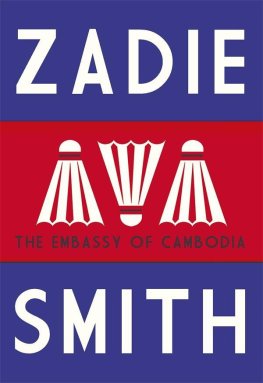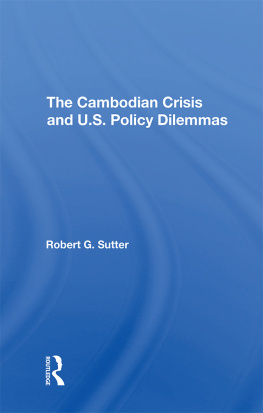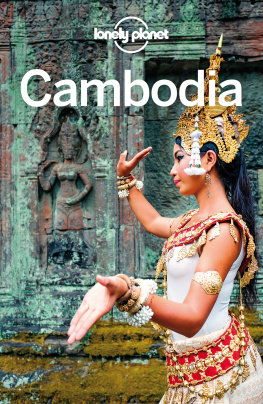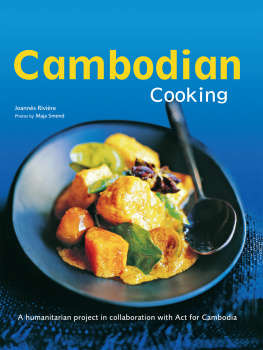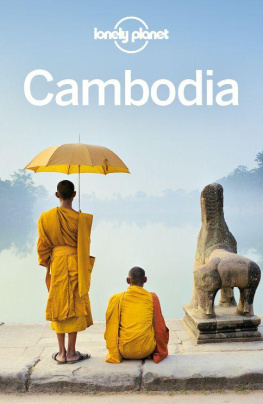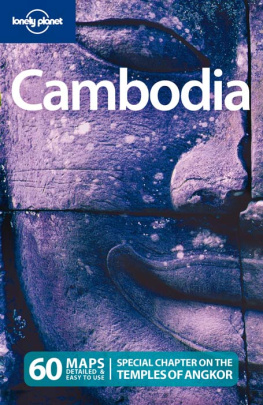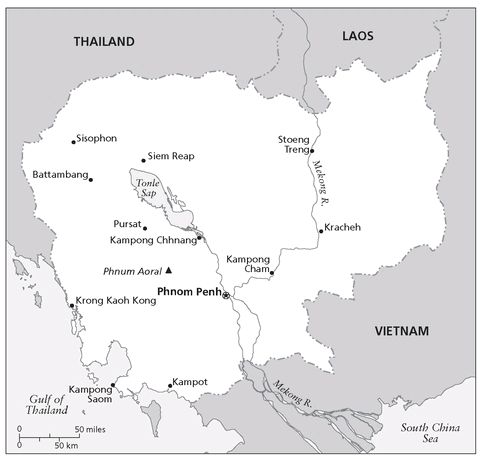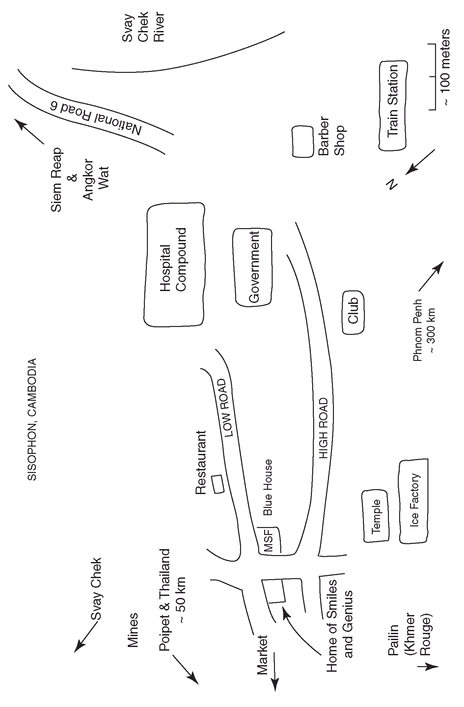Table of Contents
Cambodia Calling
A Memoir from the Frontlines of Humanitarian Aid
Richard Heinzl
Dedicated with reverence to the people of Cambodia and
To Carrie Heilbron, and Ryan and Carson Heinzl
On Pembroke Road look out for my ghost,
Dishevelled with shoes untied,
Playing through the railings with little children
Whose children have long since died.
Patrick Kavanagh,
If Ever You Go To Dublin Town (Extract)
In recalling the facts presented in Cambodia Calling, the author relied upon journal notes, correspondence, interviews with individuals, review of literary and journalistic information, and simply memory. Every attempt has been made to present a truthful recollection of events. Names have been changed in a very few instances to protect the identity of patients and others who, because of time and events, I would not want to jeopardize. It is not for us to judge those who were doing their best given their resources and training, and in such an extreme situation.
Inaccuracies in spelling may have occurred as some names and facts were recalled phonetically, and others may have been unintentionally altered due to these events occurring quite a few years ago. Where dialogue has been recreated, it was done with the full intent to impart to the reader the most accurate rendition of what was said and what occurred.
Drs. Don and Liz HillmanCanadian pediatricians working in Kampala, Uganda
Davea Ugandan artist in Jinja, Uganda
Malcolm Lowrya traveler from New Zealand
Dr. James E. Anderson ( Jim)a professor and founder of McMaster University Medical School
Boscha local acquaintance in Grenada
Jim Lanefriend and co-founder of MSF Canada
Jacques de Millianofounder of MSF Holland
Rob Overtooma Dutch physician working in Sisophon, Cambodia
Chuondriver
Smilesa young girl in Sisophon
Monsieur Mogiathdirector of the Sisophon Hospital
Madame Boranhospital midwife
Dr. Sannhospital physician
Sok Samuthhospital nurse
Dr. Bun Thoeunhospital physician
Rheecook and housekeeper
Sao Simgovernment official in Sisophon
Maurits van PeltMSF country director, Cambodia
Dr. Nheanhospital physician
Madame Somath and Madame Jewnhousekeepers/cook
Widriver
Ian SmallCanadian MSF volunteer
Kenya-Uganda Border near Tororo
May 1985
Ahead is a border compound with a wooden tower and a long barbed-wire fence that tracks a river bank until it dives into the green tropical forests of Uganda where the war is on. There is no shadow and very little mid-day wind. I feel the intense African sun through my cap, and, looking up, see a white-edged thundercloud, dark at its center, readying for an equatorial deluge. No one seems to notice me, other than some shirtless kids hiding in the roadside thickets. They appear self-absorbed, as if possessed. Its the way their blunted eyes hold you, not letting go. One long stare at the curious foreigner, the mzungu or blanc, whatever they call you here.
I thought the wooden gate in front of me would make a creaking noise as I pushed on the splintered frame, but a gust of wind springs it open wide. Thats how storms begin over herea solitary gust pierces the calm and the mile-high clouds split, letting loose a torrent of rain. The open gate leaves a gap in the perimeter fence. Its saying the thing youre looking for is over here. Come through.
So I walk through unchecked, into a foreign country in plain view, a twenty-two-year-old medical student from the other side of the world on elective in Africa. I lay my pack down by the cracked white wall of the main office and expect to see a border official sleeping away in the torrid heat, his chair tilted back in a corner of the room. Yet there is no one present. Nobody to ask who I am and why Im here. There are just indecipherable letters spray-painted on the cinder block, a framed picture of President Milton Obote, and splintered shelving that in some remote time had held official papers. I keep hearing a crying sound off in the forestsome kind of bird or monkey. Or perhaps an insect. Even beetles make fierce sounds here.
In the middle of the compound is a mess of heavy machine parts and the metal carcasses of army trucks and jeeps. The parts might rust for another fifty years, before someone decides to drag them away. I am reminded of Paul Nashs painting Totes Meer, or Dead Sea, with all that war wreckage piled high. I wander over to the unmanned border tower. Fifty feet high, it overlooks emptiness. No binoculars, no radio or military gun position. No one up there to signal the arrival of an intruder to the rest of the country.
I feel my pockets. Nothing missing. Still have the 800 Kenyan shillings wrapped in a wad around a US fifty and, sewn into my pants, more US cash, my passport, the visa and the all-important letter of introduction for two Canadian pediatricians working at Makerere University in Kampala. If I were to be questioned, I would explain that the good doctors are expecting me, that all is arranged. I am simply hitching a ride across the country to join my compatriots in Kampala.
Out past the border tower and the barbed-wire fence, there is one road leading into Uganda, lined with banana trees and tall grasses. About a kilometer away I can make out a collection of olive green trucks and some men milling around. They are Ugandans and I am certain they are military. Still no border guards or customs people between me and them, just signs with emblems saying Republic of Uganda and By Order of the Constabulary, Uganda Police Force. There are more posters of Oboteone as big as a billboard where he is surrounded by adoring, uniformed children holding school books. It has a Stalinist feel to it.
As I wander down the road, people begin to emerge from the tall grass and scrub. Theyre not a border foot patrol or military types, but simply a family coming out of the bush onto the road. There are six of them, the adults carrying vinyl suitcases and burlap sacks. The mother is wearing a citrus-colored Busuti dress with puffed-up, exaggerated shoulders. Each child has a box to carry, tied up neatly with string. In a swoop, the mother lowers an enormous demijohn of gasoline from her head onto the road and rests momentarily close beside me, calling me a name which I guess means white person or English man. Everyone seems to have different names for foreigners. I sling my navy blue Lowe Alpine backpack over my shoulder and we all march down the road.


